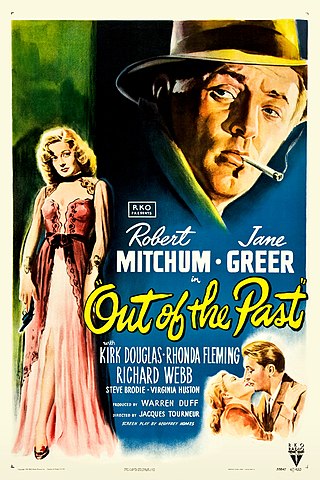
Out of the Past is a 1947 American film noir directed by Jacques Tourneur and starring Robert Mitchum, Jane Greer, and Kirk Douglas. The film was adapted by Daniel Mainwaring from his 1946 novel Build My Gallows High, with uncredited revisions by Frank Fenton and James M. Cain.

Richard Owen Fleischer was an American film director whose career spanned more than four decades, beginning at the height of the Golden Age of Hollywood and lasting through the American New Wave.

Charles McGraw was an American stage, film and television actor whose career spanned more than three decades.

Marie Windsor was an American actress known for her femme fatale characters in the classic film noir features Force of Evil, The Narrow Margin and The Killing. Windsor's height created problems for her in scenes with all but the tallest actors. She was the female lead in so many B movies that she became dubbed the "Queen" of the genre.

The Long Night is a 1947 American film noir crime-drama directed by Anatole Litvak and produced by RKO Pictures. It is a remake of Le jour se lève (1939) by Marcel Carné. The drama stars Henry Fonda, Barbara Bel Geddes, Vincent Price and Ann Dvorak. The title of the original French film is an idiom which translates roughly as "dawn is breaking".

Born to Kill is a 1947 RKO Pictures American film noir starring Lawrence Tierney, Claire Trevor and Walter Slezak with Esther Howard, Elisha Cook Jr., and Audrey Long in supporting roles. The film was director Robert Wise's first film noir production, preceding his later work on The Set-Up (1949) and The Captive City (1952).
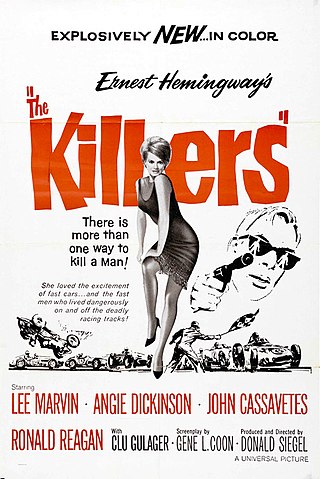
The Killers is a 1964 American neo noir crime film. Written by Gene L. Coon and directed by Don Siegel, it is the second Hollywood adaptation of Ernest Hemingway's 1927 short story of the same name, following the 1946 version.

Deadline at Dawn is a 1946 American film noir, the only film directed by stage director Harold Clurman. It was written by Clifford Odets and based on a novel of the same name by Cornell Woolrich. The RKO Pictures film release was the only cinematic collaboration between Clurman and his former Group Theatre associate, screenwriter Odets. The director of photography was RKO regular Nicholas Musuraca. The musical score was by German refugee composer Hanns Eisler.

Armored Car Robbery is a 1950 American film noir starring Charles McGraw, Adele Jergens, and William Talman.
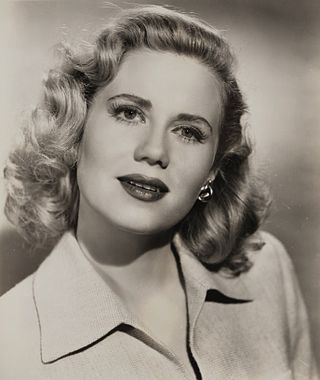
Jacqueline Jane White is an American former actress, who had a brief career in Hollywood as a leading lady in motion pictures during the early and post-WW2 years from 1942 until 1952, with starring and playing smaller roles in around 25 feature films.
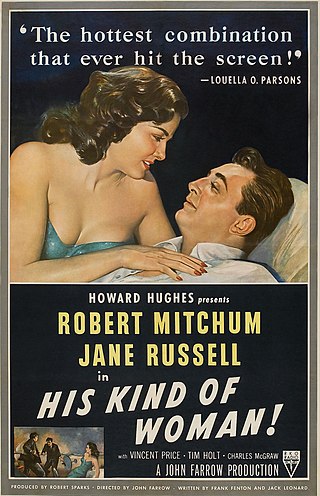
His Kind of Woman is a 1951 film noir starring Robert Mitchum and Jane Russell. The film features supporting performances by Vincent Price, Raymond Burr and Charles McGraw. The direction of the film, which was based on the unpublished story "Star Sapphire" by Gerald Drayson, is credited to John Farrow.
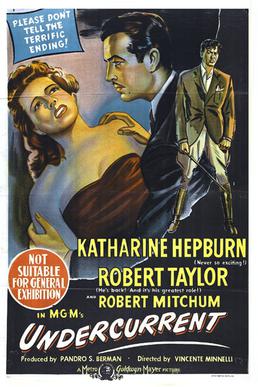
Undercurrent is a 1946 American film noir drama directed by Vincente Minnelli and starring Katharine Hepburn, Robert Taylor, and Robert Mitchum. The screenplay was written by Edward Chodorov, based on the story "You Were There'" by Thelma Strabel, and allegedly contained uncredited contributions from Marguerite Roberts.

The Happy Time is a 1952 American comedy-drama film directed by Richard Fleischer, based on the 1945 novel of the same name by Robert Fontaine, which Samuel A. Taylor turned into a hit play. A boy, played by Bobby Driscoll, comes of age in a close-knit French-Canadian family. The film stars Charles Boyer and Louis Jourdan as his father and uncle respectively. The play was also adapted into a musical in 1967 by composer John Kander, lyricist Fred Ebb, and librettist N. Richard Nash, and starred Robert Goulet.

Narrow Margin is a 1990 American neo-noir action thriller film written and directed by Peter Hyams. It stars Gene Hackman and Anne Archer, with James B. Sikking, Nigel Bennett, Harris Yulin and J. T. Walsh in supporting roles. It was released in the United States by TriStar Pictures on September 21, 1990.

Bodyguard is a 1948 American film noir directed by Richard Fleischer and written by Fred Niblo Jr.and Harry Essex. It is based on a story written by George W. George and Robert Altman. The drama features Lawrence Tierney and, in her final screen appearance, Priscilla Lane.
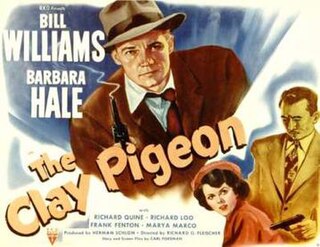
The Clay Pigeon is a 1949 American film noir directed by Richard Fleischer and written by Carl Foreman, based on a true story. The drama features Bill Williams and Barbara Hale, a real-life husband and wife.

Violent Saturday is a 1955 American CinemaScope crime film directed by Richard Fleischer and starring Victor Mature, Richard Egan and Stephen McNally. Set in a fictional mining town in Arizona, the film depicts the planning of a bank robbery as the nexus in the personal lives of several townspeople. Filmed on location in Bisbee, Arizona, the supporting cast was particularly strong, with Lee Marvin, Sylvia Sidney, and Ernest Borgnine.
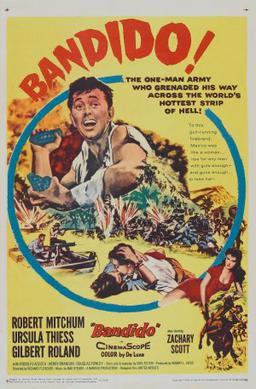
Bandido is a 1956 American western film directed by Richard Fleischer and starring Robert Mitchum, Ursula Thiess, Gilbert Roland, and Zachary Scott. The film, set in the Mexican Revolution and filmed on location around Acapulco, was written by Earl Felton. Robert Mitchum also co-produced the film through his DRM Productions company.

Child of Divorce is a 1946 American drama film directed by Richard O. Fleischer. It was the first film that he directed. RKO had adapted the play to film before as the 1934 film Wednesday's Child.
Earl Felton (1909–1972) was an American screenwriter.


















